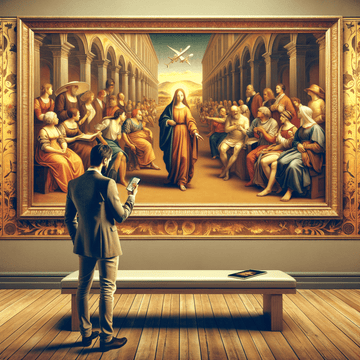"Digital Art Revolution: The Evolution and Impact of Creative Innovations in the Future of Art"
May 25, 2024

Art has been a pivotal aspect of human culture for centuries, but its face is constantly changing. One of the most significant transformations of recent times has been the rise of digital art. Created using digital technologies as an essential part of the artistic or presentation process, digital art brings an entirely new dimension to creative expression.
The Evolution of Digital Art
Although the roots of digital art can be traced back to the 1950s, it wasn't until the 1980s, with the advent of personal computers, that it started to gain significant recognition. Artists began exploring the potential these devices offered, using basic design programs to produce geometric shapes and pixel art.
As technology advanced, so did the capabilities of digital art tools. More sophisticated software emerged, allowing artists to mimic the effects of traditional mediums like painting, drawing, and sculpture. Fast forward to today, artists employ a myriad different digital tools, from computer graphics and digital photography to 3D modelling and virtual reality, to produce stunning artworks.
The Impact of Digital Art
Though some may argue that digital art lacks the authentic touch of the physical brush on canvas, its impact is undeniable. Its introduction has democratized the creation and consumption of art. With an array of free or reasonably priced software available, anyone with a computer can experiment with digital creations. It's also made art more accessible. In a digital format, art can be shared instantly and globally, crossing geographic and socio-economic boundaries.
Moreover, digital art is already carving out a significant place in the art market. In recent years, we've seen a surge in popularity of NFTs (Non-Fungible Tokens), where digital artworks are bought, sold, and traded on the blockchain. This development not only represents a new economic model for artists but also a shift in how we value and collect art.
The Future of Digital Art
All signs point toward a future where digital art will become an integral part of our cultural fabric. With advancements in technology like artificial intelligence (AI), augmented reality (AR), and virtual reality (VR), the artists of tomorrow will have an unprecedented palette of tools at their disposal. These technologies will allow them to push the boundaries of creativity, crafting experiences that combine not just visuals but also interactivity, sound, and even tactile feedback.
Moreover, as our world becomes digitized, it's foreseeable that appreciation for digital art will continue to rise and drastically change the market. Artists will have greater opportunities to monetize their work, and consumers will have new systems for engaging and connecting with art.
Interested in exploring more art like what we've discussed today? Our collection offers a diverse range of styles, including Digital Artand beyond. Feel free to dive into our world of artistic wonders by visiting https://metalposterart.com/collections/digital-art. Whether you're looking to admire or to acquire, there's always something captivating waiting for you. We're excited to share our passion for art with you.




